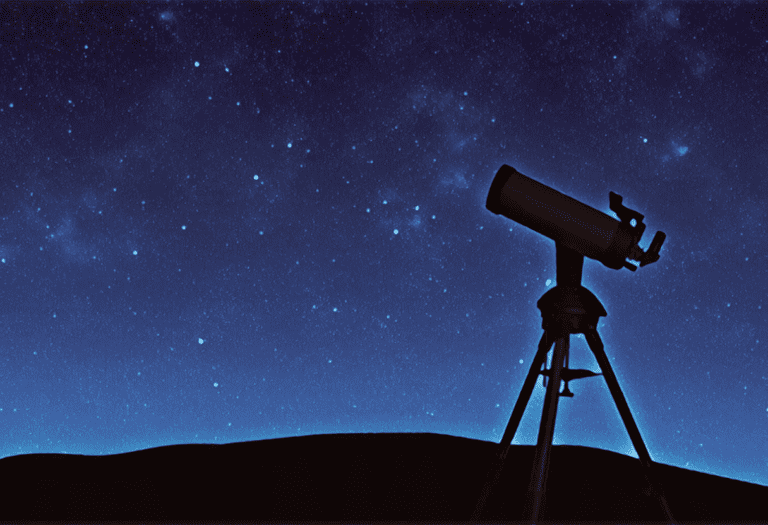Wondering which is the best telescope to view Saturn in 2024?
The allure of Saturn, with its iconic rings, makes it a prime target for astronomy enthusiasts. But to truly appreciate its beauty, you need a telescope that combines high magnification and excellent light-gathering ability.
Not every telescope is up to this task, so choosing the right one is crucial for an optimal planetary observation experience.
Well, we’ll be going over:
- What features should you look for in a telescope to get the best view of Saturn’s rings and moons?
- How do refractors, reflectors, and compound telescopes differ in their ability to reveal the beauty of Saturn?
- What are the essential considerations for both newcomers and seasoned stargazers in choosing a telescope for observing Saturn in 2024?
With this guide, you’ll be equipped to find a telescope that not only showcases Saturn’s grandeur but also fits your stargazing style and experience level.
Let’s dive in.
Choosing the Right Telescope for Viewing Saturn
- Celestron StarSense Explorer – Top Pick
- ABOTEC 90mm Telescope
- Celestron Travel Scope 70
- Celestron NexStar 90SLT
- Celestron StarSense Explorer
I’ve scoured the market to bring you the top telescopes for a breathtaking view of Saturn. Offering a balanced mix of affordability, ease of use, and quality optics, these telescopes are carefully selected to enhance your stargazing experience. Whether you’re a budding astronomer or a seasoned sky-watcher, my picks will help you witness Saturn’s rings with stunning clarity.
Celestron StarSense Explorer
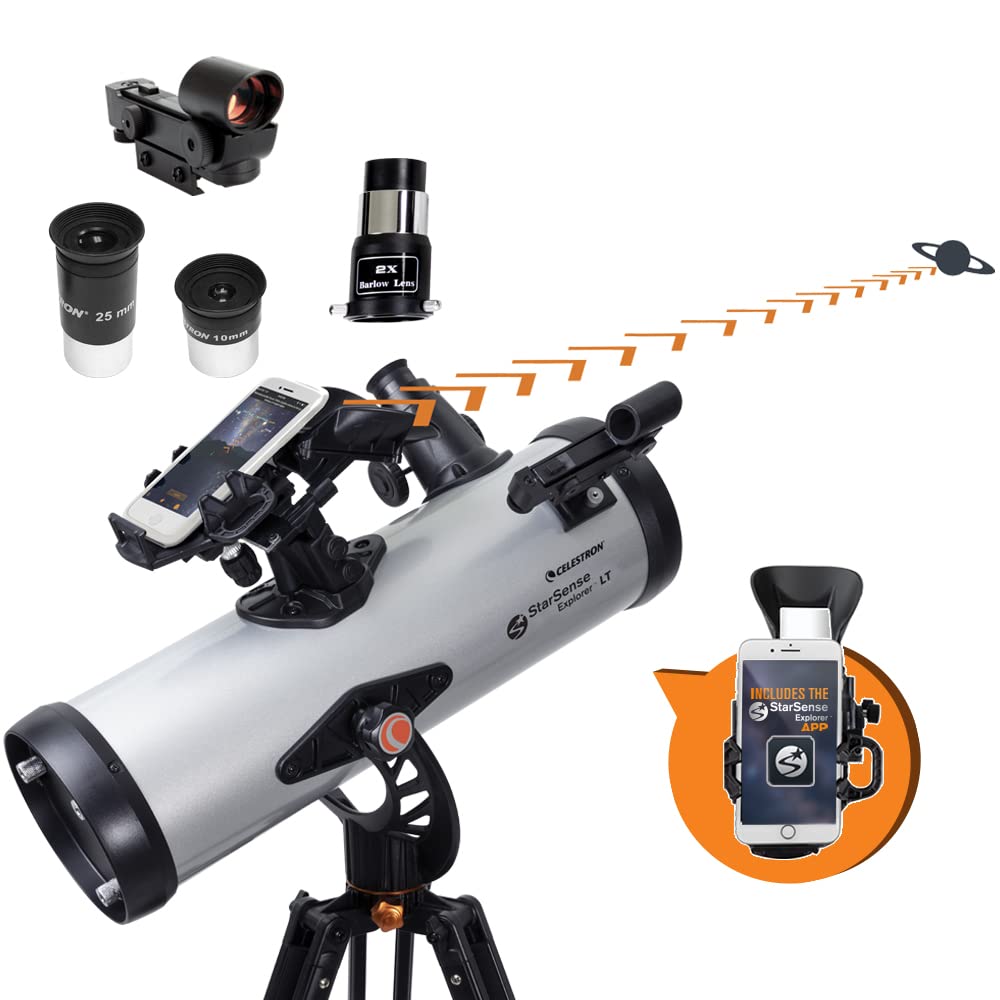
Having just peered through the Celestron StarSense Explorer, I can confidently say it’s a solid choice for those eager to observe the rings of Saturn with minimal hassle.
Pros
Cons
Upon unpacking the Celestron StarSense Explorer, its quick assembly had me stargazing in no time. Aligning my smartphone with the telescope’s optics was a breeze, and the StarSense app became my personal navigator through the cosmos.
The app’s accuracy impressed me as it directed me to Saturn effortlessly, providing a spectacular view of its iconic rings. The arrows on the screen accurately anticipated where I should aim, and a green bullseye affirmed the perfect alignment.
While marveling at celestial sights, I did notice the mount was less robust than I’d prefer. Despite that, the telescope’s portability made it an excellent companion for my impromptu stargazing adventures away from the city lights.
ABOTEC 90mm Telescope
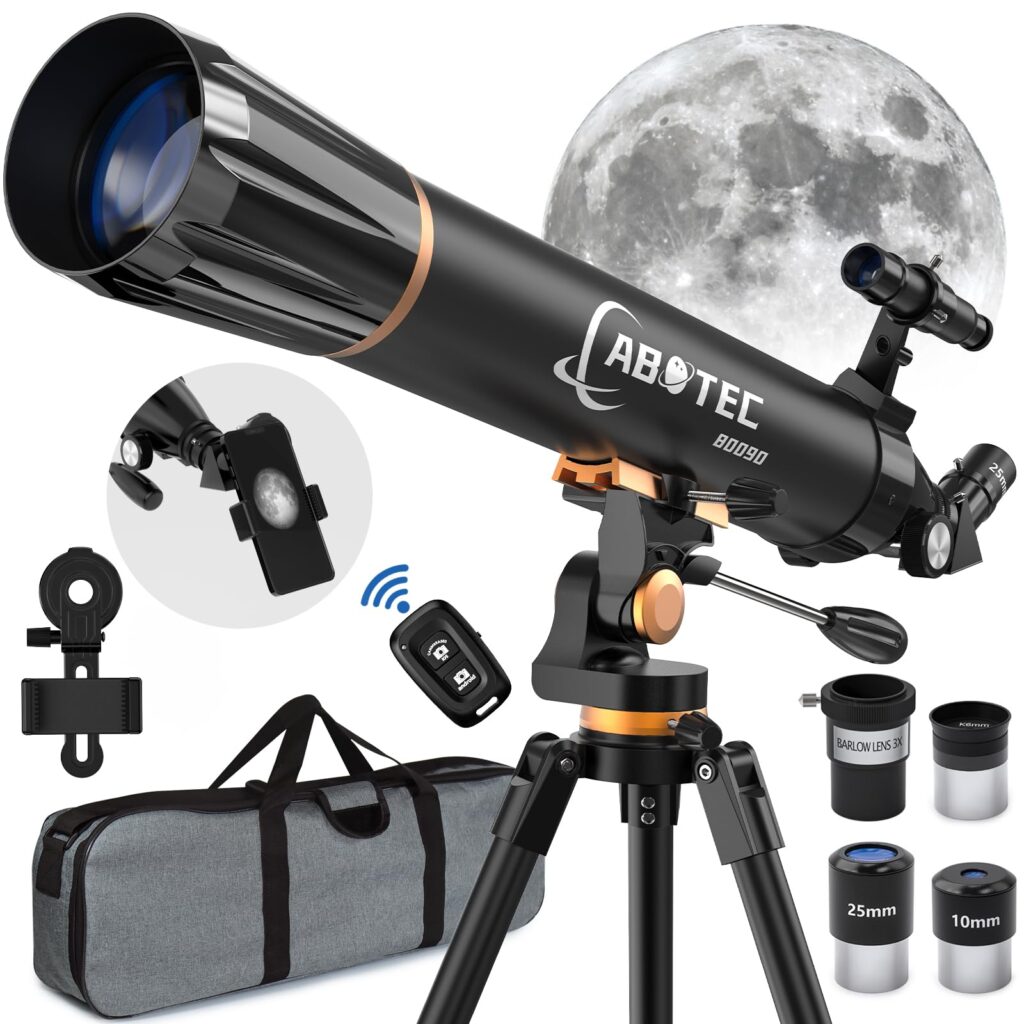
If you’re passionate about stargazing and hunting for Saturn in the night sky, this telescope offers a splendid balance of clarity and usability.
Pros
Cons
Gazing up at the cosmic ballet, Saturn’s rings became a spectacle through the lens of my ABOTEC Telescope. The device boasts a significant 90mm aperture, letting copious amounts of light through – a critical factor in astronomical clarity. The fully multi-coated lens ensures that the image isn’t just bright, but sharp and high-contrast as well. It’s like every stargazing session is a private showing of the universe.
As someone who values ease of use, the no-tool setup impressed me deeply. I was prepared for a complicated assembly but was pleasantly surprised with its intuitiveness. Guiding the telescope towards celestial bodies felt seamless with the spot-on finder scope, and transitioning between the Kellner eyepieces gave me a range of magnifications to play with – Saturn’s rings popped into focus with startling detail.
The experience isn’t just about observing; it’s also sharing the wonder. The included phone mount is a testament to that, allowing me to capture Saturn’s majesty and its moons. However, be prepared for its substantial build. While this speaks to its quality, portability might be a slight concern for some. The sturdy tripod is a grounding addition, yet I found myself wishing for even greater stability when dialed into the highest magnifications.
Despite its heft and my desire for a more steadfast tripod, the ABOTEC Telescope remains a treat for both seasoned astronomers and enthusiastic beginners alike. The learning curve is a fair trade-off for the quality of celestial sightings it delivers. Whether I’m basking in the silent beauty of Saturn or sharing my cosmic discoveries through a snapshot, each experience with this telescope feels like a journey through the stars.
Celestron Travel Scope 70
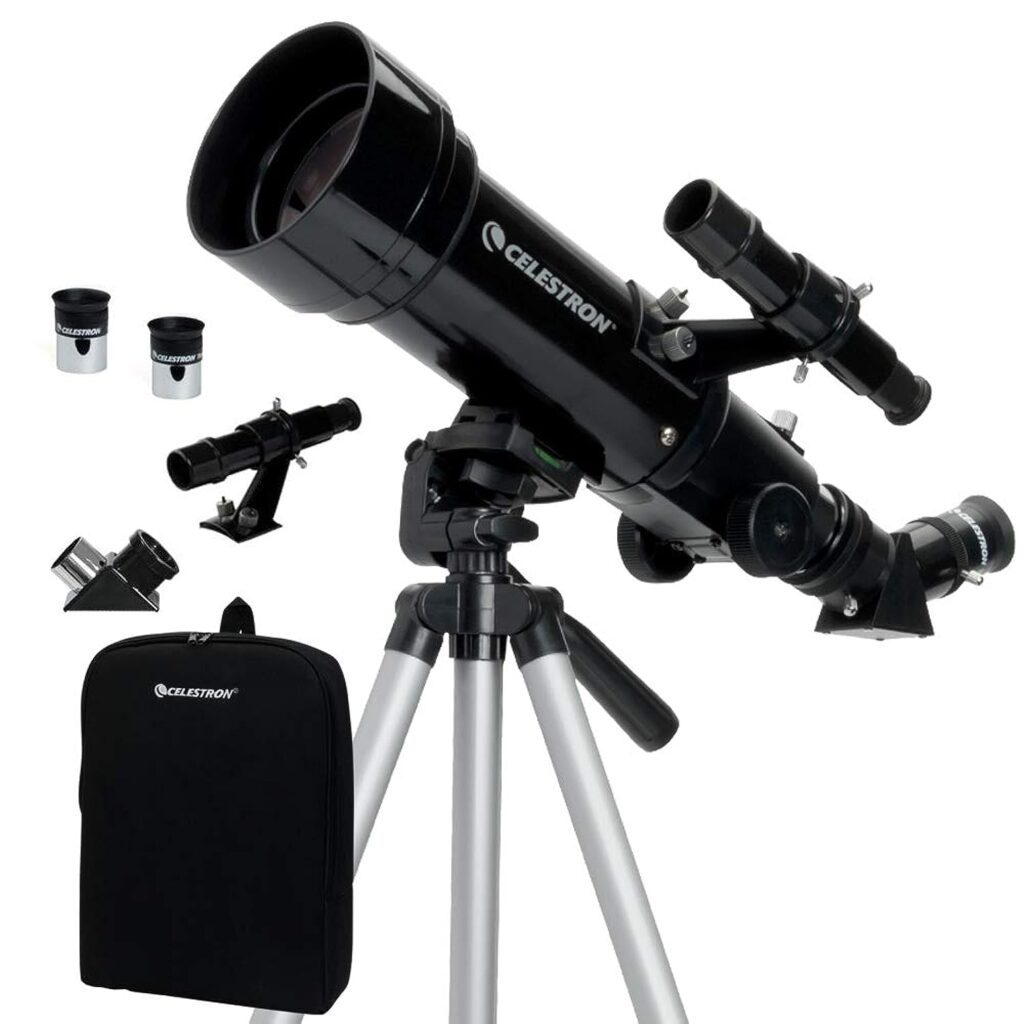
I found the Celestron Travel Scope 70 to be an ideal choice for those starting their stargazing adventures, especially when looking to gaze at the stunning rings of Saturn.
Pros
Cons
Upon my first interaction with the Celestron Travel Scope 70, the simplicity of setup was immediately apparent. No fiddling with tools or complicated instructions. It felt like I was ready to start observing in no time. The backpack that comes with it is incredibly handy, housing the scope and accessories for any impromptu stargazing sessions.
Throughout my experience, the scope’s quality optics stood out. Saturn’s rings appeared crisp against the night sky, and it was exhilarating to share this view with friends. The two eyepieces offered varying magnifications, allowing for a range of viewing experiences. By day, terrestrial views were equally impressive, showcasing the versatility of the Travel Scope.
While carrying it to various locations, I noticed the lightness of the scope. Weighing a mere 3.3 pounds, it was no hassle at all. That said, the lightweight design meant I had to be extra careful to prevent any accidental knocks or bumps. Ascending the magnification revealed the tripod’s limits, with some wobbles noticed at higher powers. For those planning to delve deeper into astronomy, investing in a sturdier tripod and additional accessories might be worthwhile.
In summary, my experience with the Celestron Travel Scope 70 was pleasantly straightforward and ideal for a beginner. The pros of its optic quality, portability, and bonus software offer a great package for newcomers, while the cons, though minor, are important to keep in mind for those looking for more stability and advanced features.
Celestron NexStar 90SLT
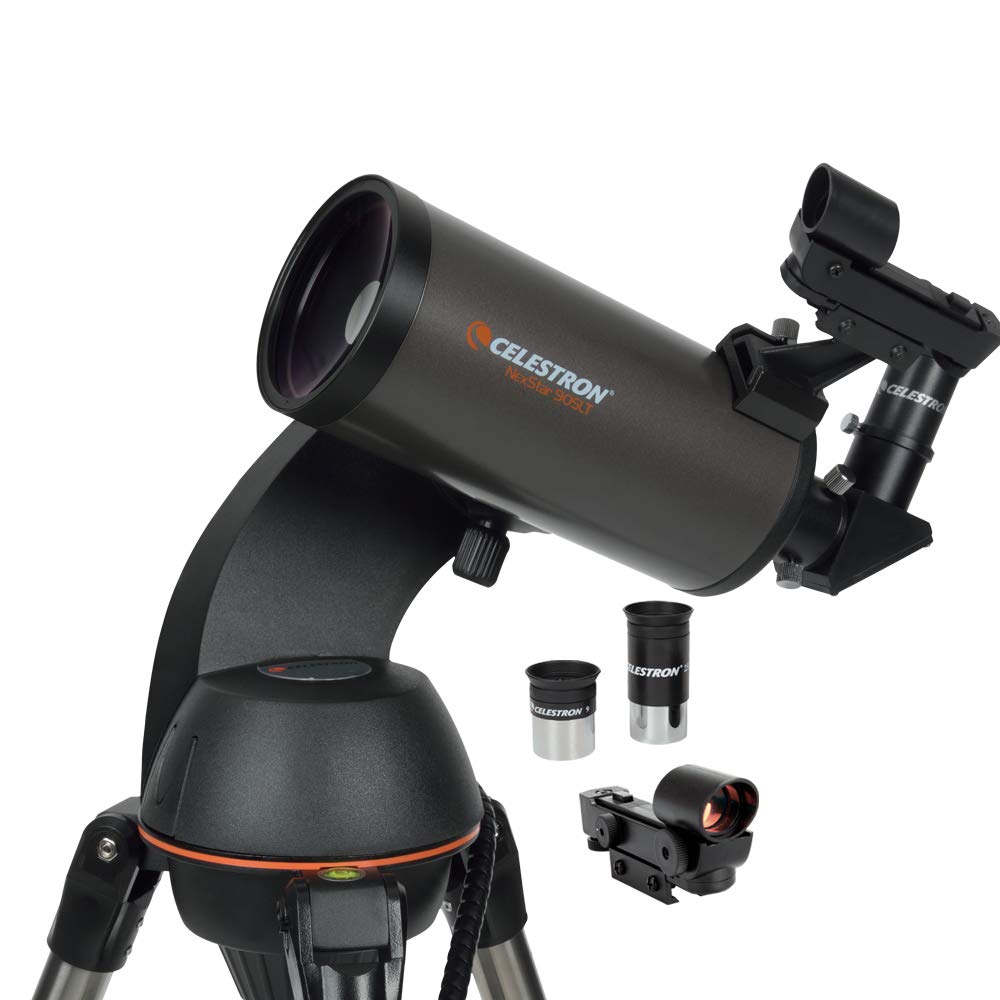
The Celestron NexStar 90SLT Computerized Telescope blends clear optics, user-friendly technology, and portability, making it a joy to use for viewing Saturn.
Pros
Cons
Observing the night sky with the NexStar 90SLT telescope brings the cosmos to life right before my eyes. Its portable design means I can take it on overnight trips without any hassle. The automated star-locating feature, a godsend for new astronomers, allows me to effortlessly browse the heavens.
The Maksutov-Cassegrain optics provide remarkably crisp images of celestial bodies. Gazing at Saturn, the view is breathtaking; the rings appear in stark detail, a testament to the quality of the design. This telescope has truly enhanced my stargazing sessions.
Aligning the telescope is intuitive with SkyAlign. By following the instructions, which only took me a few tries to master, I can now align the telescope with confidence. And on nights filled with eager anticipation, this telescope does not disappoint. The celestial views it offers, paired with its solid construction, assure me that I made the right choice.
Celestron StarSense Explorer
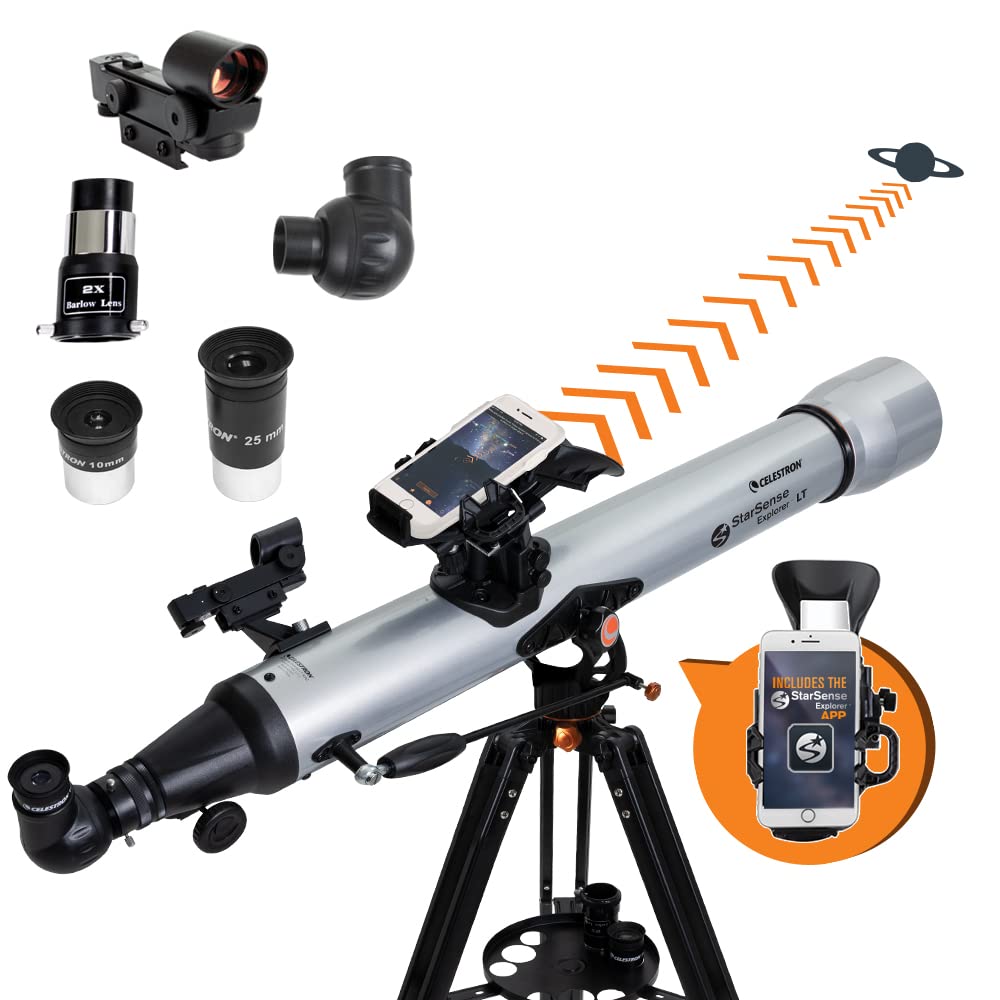
I found the StarSense Explorer to be an incredible tool for amateurs like me who want to explore Saturn’s majestic rings with minimal fuss.
Pros
Cons
Getting to grips with the Celestron StarSense Explorer was easier than I ever expected. Just last night, I aligned the telescope using my smartphone, and within minutes, the rings of Saturn were in clear view. The guidance system highlighted by the green bullseye was spot-on, turning the intricate task of locating celestial wonders into a straightforward affair.
The views are simply breathtaking. Whether it was tracing the gas giant’s rings or getting lost in the Pleiades Star Cluster, the brightness and detail provided by the 80mm refractor brought the heavens right to my eyes. The altazimuth mount supported my stargazing journey as I smoothly tracked the night sky, uninterrupted by shaky movements.
There’s always room for growth with any product. For those not versed in smartphone apps, the initial setup and navigation could introduce a bit of a learning curve. Viewing conditions in the city can’t match the clarity of a dark sky refuge; the celestial objects in urban environments are limited. While the out-of-the-box experience is solid, avid stargazers might consider acquiring additional accessories for a more profound exploration.
Buying Guide
When selecting a telescope to view Saturn, I consider several key features to ensure a rewarding stargazing experience. My guide focuses on factors such as aperture, magnification, and mount type without recommending specific brands.
Aperture Size
The aperture is crucial as it dictates the telescope’s light-gathering capacity. A larger aperture allows me to see finer details on Saturn, such as its rings and moons.
- Ideal Aperture: At least 4 inches (100mm) for clear images
- Considerations: Bigger apertures can mean a heavier and less portable telescope
Magnification
While magnification is important, a stable and clear image is preferable to a larger but blurrier one. High magnification requires steadiness and optimal atmospheric conditions.
- Recommended Ratio: Magnification should not exceed 50 times the inch of aperture
- Eyepiece Quality: Higher quality eyepieces can provide better magnification and clarity
Mount Type
The mount stabilizes the telescope and can affect the ease and enjoyment of tracking celestial objects.
- Alt-Azimuth: Simple to use, good for beginners
- Equatorial: More complex but allows for smooth tracking along celestial paths
Extras
Extra features such as computerized controls can enhance my experience, but I prioritize the optics’ quality above additional functions.
- Filters: A good Saturn view can be enhanced with a planetary filter
- Computerized Controls: Helpful for locating celestial objects, but not a substitute for quality optics
| Feature | Importance | Notes |
|---|---|---|
| Aperture | High | Larger is preferable |
| Magnification | Medium | Opt for clarity |
| Mount Type | High | Depends on experience |
| Extras | Low | Quality over features |
I adhere to these factors with a view to obtaining the best viewing experience of Saturn, focusing on what matters most in telescope performance and usability.
Frequently Asked Questions
When selecting a telescope to view Saturn, key considerations include magnification, ease of use for beginners, versatility to observe other celestial objects, and the potential for astrophotography.
What factors should I consider when choosing a telescope for viewing Saturn’s rings?
I recommend considering aperture size, optical quality, and mount stability. A larger aperture allows more light to enter the telescope, improving the clarity and details of Saturn’s rings. High-quality optics will sharpen the image, and a stable mount will reduce vibrations for a better viewing experience.
How much magnification is required to clearly observe Saturn through a telescope?
To observe Saturn’s rings with clarity, a magnification of at least 25x per inch of aperture is ideal. For example, with a 4-inch telescope, 100x magnification should suffice. However, atmospheric conditions play a significant role and may limit magnification capabilities.
Can beginners successfully observe Saturn, and if so, what type of telescope is recommended?
Yes, beginners can successfully observe Saturn. I suggest starting with a Dobsonian telescope due to its ease of use and ability to provide good aperture at an affordable price. This design is user-friendly for newcomers eager to admire Saturn’s rings.
What are the best types of telescopes for viewing both planets like Saturn and distant galaxies?
For versatility, I recommend a Schmidt-Cassegrain or a Maksutov-Cassegrain telescope. These types excel in providing detailed planetary views and have enough light-gathering capability to observe distant galaxies.
How does the inclusion of a camera affect the choice of telescope for planetary observation?
Adding a camera requires a telescope with a sturdy mount and slow-motion controls for accurate tracking. GoTo computerized mounts are beneficial for long-exposure astrophotography and capturing clear images of planets like Saturn.
When trying to observe Saturn, how can one locate it in the night sky?
To locate Saturn, I use a star chart or a mobile astronomy app to determine its current position in the sky. Saturn typically follows an east-to-west path near the ecliptic, which is the apparent path of the sun across the sky.





